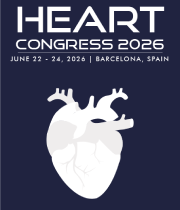Title : Association between transthoracic echocardiography monitoring indicators and the incidence of postoperative acute kidney injury in coronary artery bypass grafting
Abstract:
Background: Acute kidney injury (AKI) is a common complication following coronary artery bypass grafting (CABG) surgery, with an incidence of 30-60%, significantly impacting both short-term and long-term mortality. In patients undergoing CABG, severe multivessel coronary artery disease or myocardial infarction often leads to cardiac capacity and hemodynamic abnormalities, potentially contributing to postoperative AKI. However, the specific nature and extent of these contributions are not well understood. This study investigates the relationship between non-invasive, easily obtainable transthoracic echocardiographic parameters—reflecting cardiac capacity and hemodynamic status—and the risk of AKI after CABG
Methods: The occurrence of AKI was determined by KDIGO criteria based on creatinine levels. We analyzed 4,568 patients from a large cohort undergoing CABG (with or without valve surgery), excluding those with preoperative renal insufficiency. All subjects underwent a TTE within 7 days prior to surgery. The study explored the association between echocardiographic parameters, such as tricuspid annular plane systolic excursion (TAPSE), cardiac index, relative wall thickness (RWT), calculated as posterior wall thickness indexed to left ventricular internal diameter at end-diastole, and the incidence of postoperative AKI. A multivariable logistic regression model was used, incorporating both established and significant univariate predictors of AKI.
Results: Of the 4568 participants, 2169 (47.48%) developed AKI, with 2051 (44.9%) experiencing Stage 1 AKI and 118 (2.6%) suffering from Stage 2 or 3 AKI. Multivariable logistic regression analysis, after extensive adjustment for confounding factors, revealed significant differences in TEE parameters between AKI and non-AKI patients. Notably, a significant reduction in TAPSE was consistently observed across all stages of AKI (adjusted Odds Ratio [aOR]: 1.04, 95% Confidence Interval [CI]: 1.02-1.10, per millimeter decrease). Moreover, RWT showed a significant association with AKI in Stage 1 (aOR: 1.05, 95% CI: 1.03–1.10, per 0.1 increase) but not in Stages 2 and 3. Other echocardiographic measurements, such as cardiac index and left ventricular diastolic dysfunction grade, did not demonstrate significant differences. These findings were consistent whether CABG was performed with or without concomitant valve surgery. Including TAPSE and RWT significantly improved AKI prediction (net reclassification improvement: 0.19,95%CI: 0.08-0.30) beyond basic models derived from other baseline factors.
Conclusion: We found that preoperative TTE measurements of TAPSE and RWT were independently associated with AKI following CABG, with RWT being a novel finding in relation to AKI. Incorporating TAPSE and RWT significantly improved AKI prediction based on other preoperative factors. This can aid in predicting AKI and identifying which patients may benefit from preventive treatments.
Audience Take Away
- Preoperative TTE measurements of TAPSE and RWT are independently associated with the risk of AKI following CABG, enhancing AKI prediction beyond traditional preoperative factors.
- RWT has emerged as a significant predictor of AKI, marking our novel discovery.
- Medical professionals can incorporate TAPSE and RWT measurements into preoperative assessments to pinpoint patients at elevated risk for AKI.
- Researchers are encouraged to delve into the underlying mechanisms linking TAPSE and RWT with AKI, possibly revealing new therapeutic avenues.



